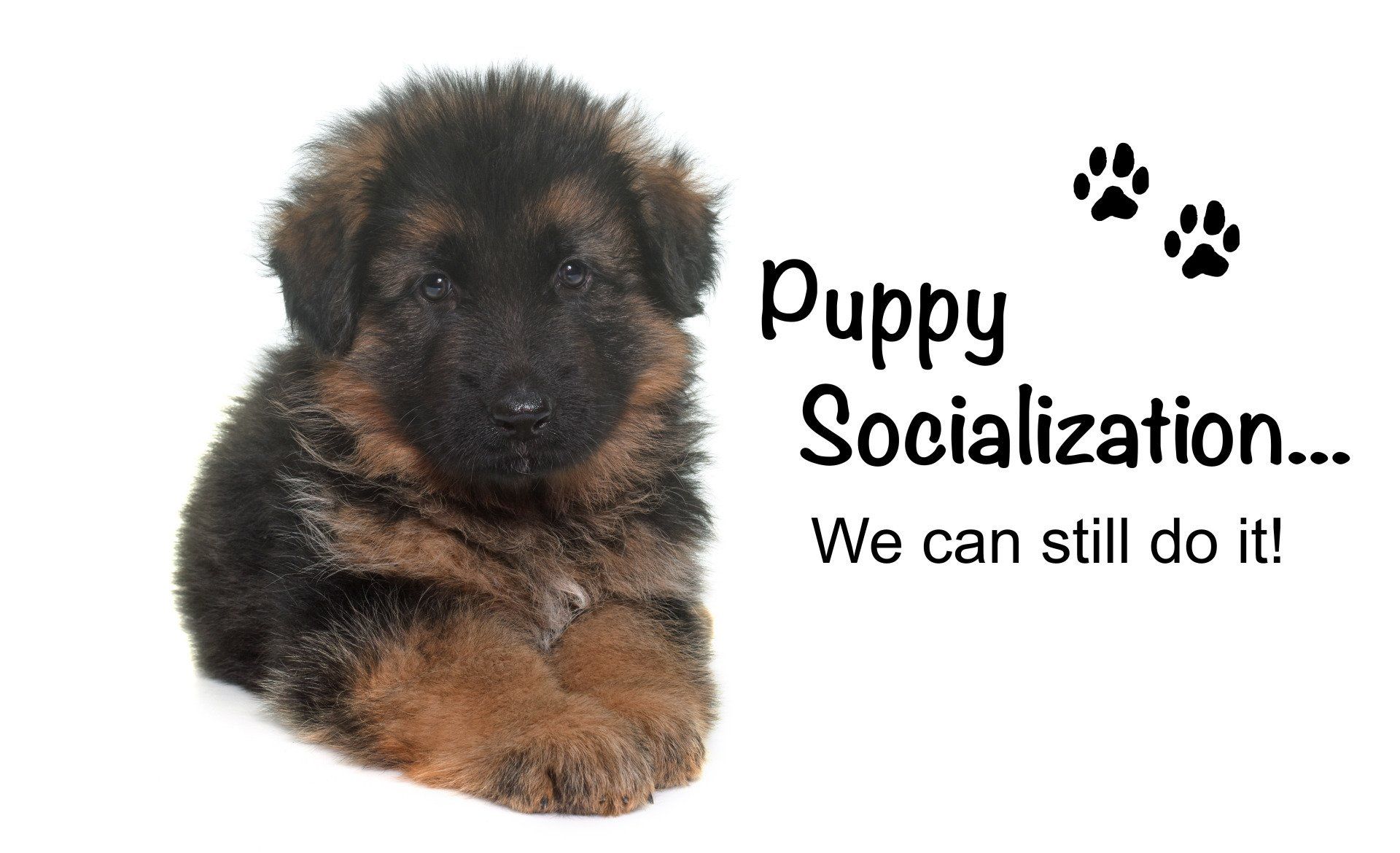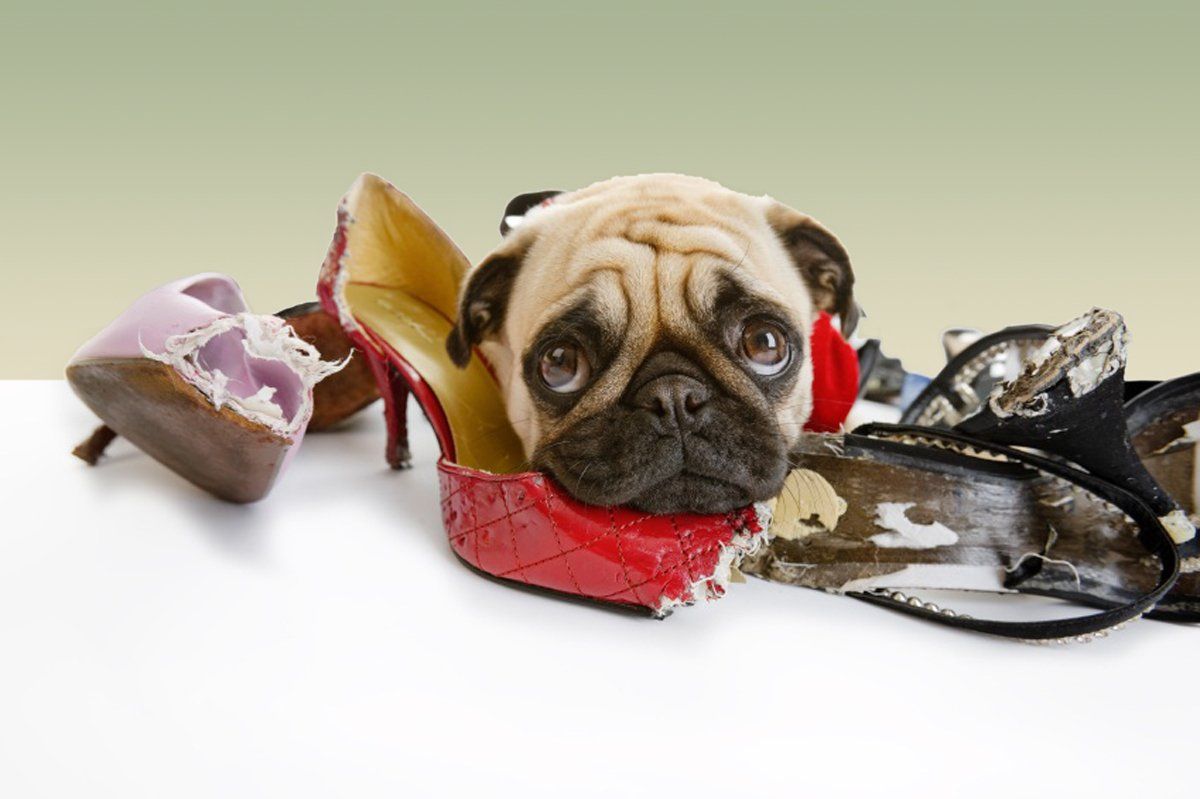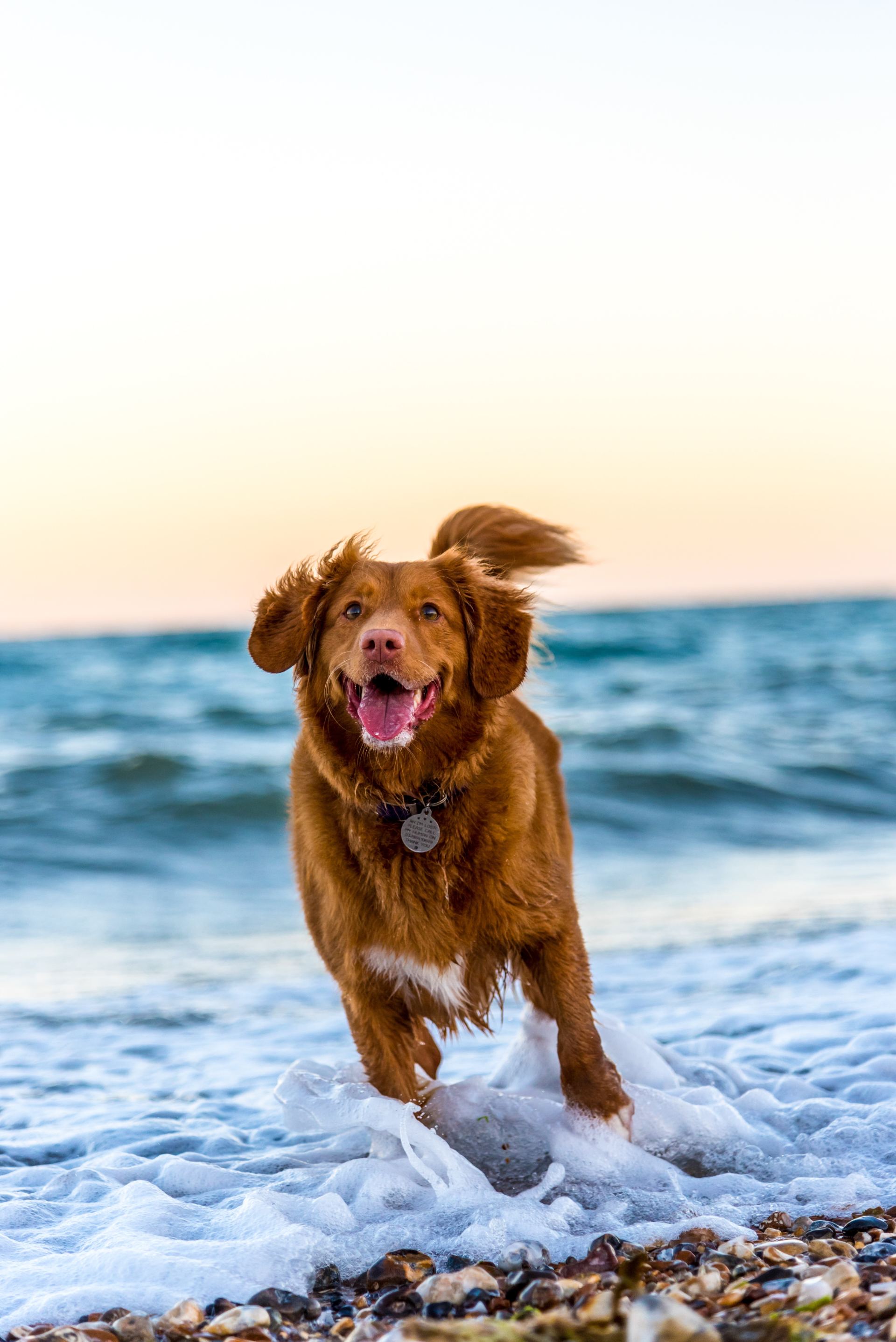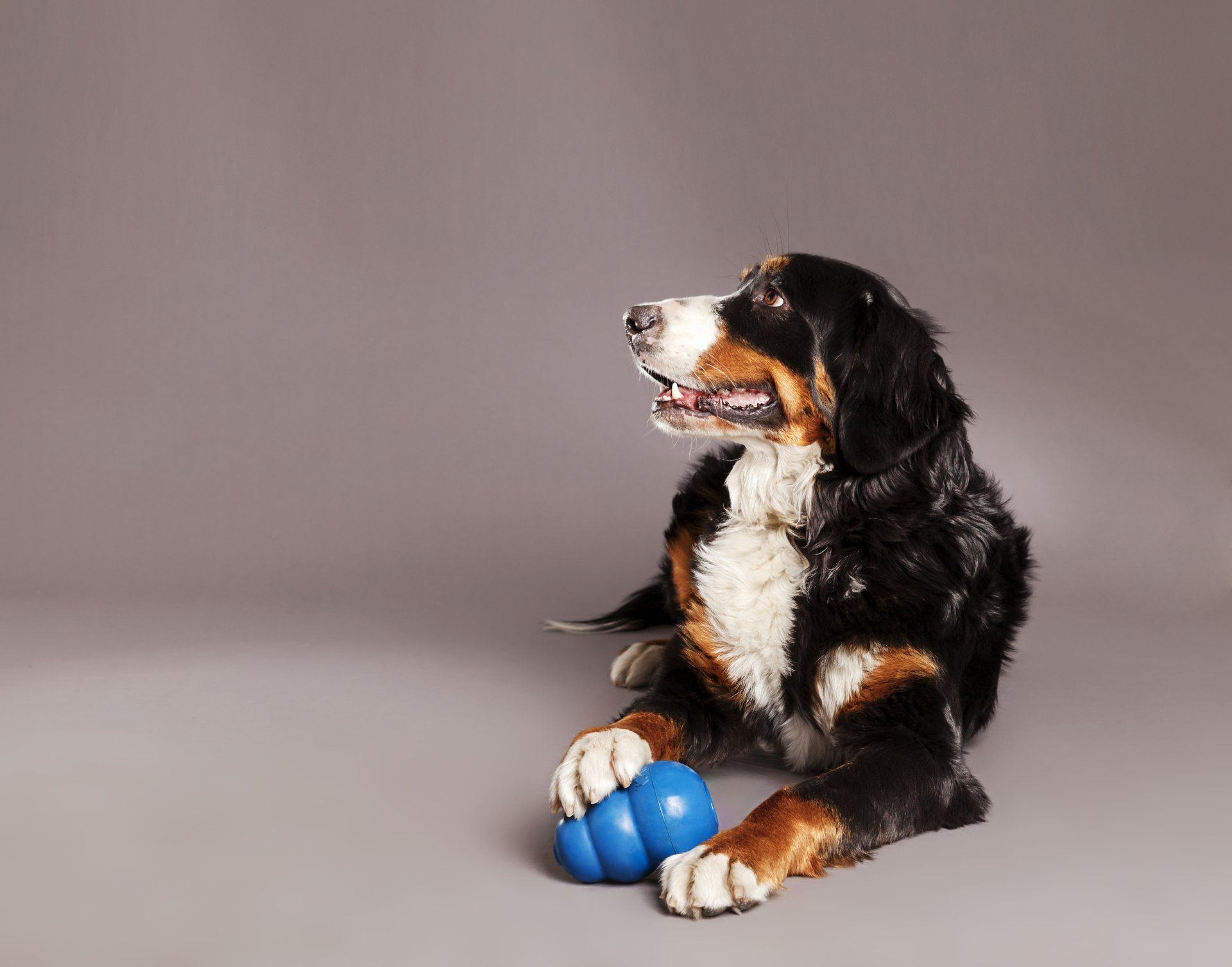The Dog Blog
THE DOG BLOG:
Stuff your dog would like you to know

By Tina Sarantis
•
19 Mar, 2020
The importance of puppy socialization cannot be over-emphasized. The experiences your puppy has up to the age of 16 weeks can vastly impact their behaviour as adult dogs. Socialization means exposing your puppies to a variety of sights, sounds and smells, other animals, problem solving, handling and having them learn to be comfortable and happy in our human world. Socialization doesn’t just mean playtimes and dozens of people petting your puppy but learning how to accept and be comfortable in the environment in which we live. But how do we do that when we can’t get ‘out and about’. Here are some ideas to keep your puppy busy gaining confidence and socializing in a ‘not so traditional’ way. Here’s a list things you CAN still do! And there are lots! Vet clinics : although most clinics have closed for non-essential services, there is still an opportunity to park your parking lot remaining inside and let your puppy observe people and their dogs that are still going in and out. Kids in the neighbour’s yard : with kids being off school or learning online, there will be more opportunity throughout the day for your puppy to hear kids playing, running and yelling in their yards. They also may be able to see them depending on what type of fence you have. Dogs on TV: I know this seems strange but as a professional dog trainer, it’s amazing how many dogs react to dogs and other animals on TV (thank you Telus!). You may even want to set up National Geographic or find a dog movie on Netflix – there are lots out there! Confidence Course: what the heck is that? Find a space in your house where you can set up everyday household items all over the floor that your puppy can explore through. This could be pillows, blankets, towels, kids toys, plastic containers, water bottles, yoga blocks and mats, balls, hoola hoops, pylons, old pieces of carpet (any changes in surfaces in general are great) – really anything you have around the house that is safe for your puppy to walk through, see and smell. If you hide their kibble amongst these items, it will entice them to explore that much more and using their nose to find food is not only great confidence building but great mental stimulation that will tire them out so you can get some word one while they nap. Be sure to closely supervise this activity (as well as all others). Food dispensing toys: instead of giving them a bowl for their food, build confidence and help develop their little minds as they problem solve. The classic rubber kong: https://amzn.to/2xNdhGI is great if you mix some wet food in with your kibble so you can really pack it in there. I’m also a huge fan of the Kong Wobbler: https://amzn.to/2U4aEJk -- super easy for the humans (just unscrew the bottom and throw your kibble in) but a great challenge for the pups as they have to knock it around to get the food to come out. Box game: all those amazon purchases you’ve been getting? Keep the boxes (make sure there are no staples!) and hide treats and kibble in them. Your puppy will stick their head in, climb through them and push them around. Games like this can be just as entertaining for you as your puppy so pull out your camera for those memories – they don’t stay puppies forever! Handling: get them used to handling ALL OVER! This includes ears, mouth, feet and tail. If your puppy is uncomfortable with any part of their body being handled, touch that body part and then feed them a treat right away. If they are VERY uncomfortable, fill a kong with cream cheese and let them lick while you’re touching them. Treasure Hunt: hide their kibble all over the house and then go help them find all the bits! Think behind doors, beside your coffee table legs, under the edges of area rugs and sitting on top of your baseboards. Appropriate toys: make sure they have proper chews and I love the types of toys that challenge they’re brains. This is a particular fave of mine – it challenges them to get all the fun little squeaky squirrels out of the stump: https://amzn.to/2QtVfj8. Balls, no stuffing squeak toys and other teething type toys are also great! Sitting at a bus stop and watching the world: you can still keep your social distance but letting your puppy see the buses and other traffic go by as well as a variety of people and the doors that open and close on a bus are all great socialization experiences! A downtown walk is also a great way to expose them tall buildings, people, traffic and maybe the occasional dog (this is not the time to be ‘meeting’ other dogs but it’s good for your puppy to see them). Their risk of diseases like parvo is minimized because you’re not on grass. Be cognizant that your puppy’s joints can’t take a lot of walking on concrete so keep these walks short and don't let people approach – we’re still working on social distancing. Our friends at Pet Planet Beddington : 100 Beddington Blvd NE #110, (403) 226-5326) a re doing a curbside delivery, so you can call in to pre-order everything your puppy might need and they can have it ready for you, take your payment and put it in your trunk or back of your car. There’s lots of stuff for your puppy to see even if you stay in the car and you can get their supplies at the same time! Our mental and emotional health is being challenged with the state of the world so spend quality time with your puppy – they’re guaranteed to make you smile!

By Tina Sarantis, CBCC-KA, CPDT-KA
•
17 Jan, 2020
Yep, this past week has been brutal and with the lack of outdoor exercise our dogs are used to, they can start doing behaviours that we all dislike including excessive barking, destructive behaviour and just plain old attention seeking! Here are a few ideas to get your pooches pooped out til the weather breaks! Play hide and seek around the house: put your dog in a stay or have another family member hold their collar while you go hide and then call them. Have a puppy party when they find you! Muffin tin game: put small treats in the cups of a muffin tin and then cover those treats with balls or other toys so your pooch has to pull the toys out to get the treats! Make it harder by putting treats only in a few of the cups so they really need to use their sniffer! Play chase: Grab a favourite toy of your dog's and start playing with it to get your dog's attention. When they see what you have (and inevitably decide they want it), run away and when they catch you, toss them the toy and then chase them! Teach your dog a new trick: Whether it's puppy push ups (sit/down/sit/down), shake a paw, spin or roll over, engaging in fun training activities will tire your dog out while reinforcing those behaviours we DO like! Indoor recall: Gather several family members and go to different areas of the house calling your dog between you. Start relatively close together til your dog gets into the game and then gradually make more distance. Don't forget to reinforce! Chewing: This is so healthy for your dog and will tire them out to boot! Just, please don't give your dogs rawhide! I love these types of bully sticks as a healthy alternative or visit our friends at Beddington Pet Planet for a variety of options. Remember, if your dog can't hold it between his paws anymore, it becomes a choking hazard. Please trade up with a high value treat and throw the stick out. Frozen kong: Soak your dog's food, add some canned food or for an extra special treat, add some canned pumpkin or unsweetened apple sauce. Both are low calorie and high value! For more ideas on tiring your dog out using their meals, see this blog article with lot of helpful ideas! And remember, 20 minutes of mental stimulation a couple of times a day may just save your (and your dog's) sanity in this nasty weather!

By Tina Sarantis, CBCC-KA, CPDT-KA
•
14 Jan, 2020
Although our canine friends can make a variety of vocalizations that may give us some information about how they’re feeling (perhaps it’s barking because he heard someone walking their dog in the back lane, or maybe it’s a whine to go potty outside or the classic howl... just cause I heard sirens!) but the majority of what they are trying to tell us are displayed through something they are doing with their body. Who has seen the Golden Retriever with the GIANT smile! Does anyone question whether or not this dog is happy even though he’s showing ALL his teeth? There are a variety of things that are somewhat intuitive to us and our best friends. A tucked tail and lowered posture usually means our dogs are uncomfortable or fearful of something in the current situation, a bounce in their step comes from joy perhaps from getting a walk. But there are some other subtle signs that I wanted to point out so you can recognize in particular if your dog is uncomfortable. This will not only help you recognize his distress but also to set him up for success. The ‘wagging tail’ is probably the most misinterpreted bit of body language for most dog owners. Many times a wagging tail can be a sign of fear or anxiety rather than the happy dog. But how do you know? Take note of the natural gait of your dog’s tail in it’s most relaxed state. This will vary based on breed... Huskies will have a high curled tail whereas German Shepherds or Labs will have much lower position as a whole. What does your dog’s tail look like when you first come home from work or ask if he wants to go for a walk? Normally you’ll get a bit of a whole body wag or at least a hip wiggle, it will have a wide, steady swooshing motion and his whole body will be loose and relaxed. What does a ‘stressed’ tail look like? There can be a lot of forms of this. Dogs that are highly aroused can bring their tail up high over their backs (this is a term called flagging) and the tail end could almost twitch, I’ve seen dogs whose tail is spinning frantically in big circles, tails that appear to be wagging about 2/3 of the way up but as you get closer to the hind end, you see that there is actually no movement at the base or in the hips of the dog. And of course, the tucked tail that may be also wagging from the tip but it is clear the dog is fearful. Unfortunately, I get a lot of calls where the care giver tells me that they have a hard time understanding why their dog did what they did because they assumed it was ok since the dog’s tail was wagging. If you see one of these other ‘versions’ of tail wagging, give your dog more space, give them something else to focus on simply remove them from the situation completely. What about those dogs with short tails you ask? You can still see either stiffness or that loose wiggly butt on them as well! I truly believe there is never a situation where the dog ‘gave no warning’. The more we can ‘read’ what our dogs are trying to tell us, the more we understand them and their behaviour. When we know better, we do better. Your dog will thank you for it!

By Tina Sarantis, CBCC-KA, CPDT-KA
•
04 Jan, 2020
Keeping your dog’s brain stimulated is just as important as getting him the physical exercise he needs! Quite often I will go to a private consult or talk to someone on the phone and they will say to me: ‘I think he’s bored’ and they are probably right at least to some extent. Mental stimulation can prevent a lot of unwanted behaviours like chewing furniture, digging in the yard and/or excessive barking. It is also a mandatory element of any behaviour modification plan I put into place for clients whose dogs are having behaviour issues. I’m certainly not saying it’s a ‘be all, end all solution’ but it is an absolute must, in my opinion, for behaviour change to occur. There is absolute truth in ‘a tired dog is a good dog’ and keeping their brain engaged is a great way to tire them out along with appropriate physical exercise. Whenever I go into a private consultation setting, I explain to people that their dogs are learning whenever they are not sleeping so instead of looking at training as a job or chore for you to practice two to three times a day 10-15 minutes per session, I look at ways I can help people incorporate training their dog into everyday life while making it fun for human and canine alike. I’m a big believer in dogs not eating out of bowls (free feeding). Your dogs need to eat so why not use meal times as a way to keep their brain working and also using it as a way to reinforce all the great behaviour their offering you. Afterall, behaviour that is reinforced is going to happen more often! These ideas are also great for those numerous dogs that 'Hoover' their food! Set aside 30 pieces of your dog’s kibble to use as random rewards when he’s doing things you like! The food can be in little bowls or bags all around the house. When you notice him doing something you like, give him a piece of food. Let me define this a bit… it might be coming over and sitting in front of you, giving you eye contact, being quiet when he hears a noise that he would normally bark at, lying down and settling on his mat (if he’s sleeping, ‘let sleeping dogs lie’ but if he chooses to go to his mat while you’re making dinner in the kitchen for example, that is a rewardable moment). This would typically be behaviours that he chooses to do without an ‘ask’ (cue) from you although there is no reason to not be reinforcing him for cued behaviours as well! Play ‘Kibble in the Middle’: this is a great way to get your dog both physically and mentally tired as well as reinforce recall and impulse control! Stand in one spot in your house or yard and call your dog to you. When he approaches, wait for him to offer a sit and the toss a piece of food away from you so he can chase it. Once he finds it, call him back and repeat throwing the food in all different directions or even up and down a few stairs (if your dog is ok on stairs – please be careful with puppies, elderly dogs or dogs with any type of joint issues). If you do this in the yard or into an area where they can’t ‘see’ the food, they are getting the added value of seeking it out with their noses instead of ‘looking’ for it. And nosework is one of the best mental stimulation exercises you can give your dog! Find It: This can be done on walks (which will also help reinforce check ins and loose leash walking – BONUS!). Take your dogs kibble in a pocket or bait pouch on your walk. Every half a block (more or less), get your dog’s attention, say ‘find it’ and scatter a handful of his food in the grass or snow and let him seek it out – essentially finding it. This in another great exercise for engaging his nose and he will check in more often anticipating that the game will happen again! Treasure Hunt: put your dog in a stay or have someone hold them while you hide bits of kibble all around the house. This might be under furniture, behind doors, under mats, etc. Then go on an exploring adventure with him! Food dispensing toys: There are so many options out there for giving your dog an opportunity to figure out how to get his food! I really believe everyone with a dog should have a good ole rubber kong . You can soak their food so it's a bit mushy and shove it in so it’s a challenge to get it out, mix it with some wet food. This is also a great option if you feed raw! You can also freeze it ahead of time as your dog gets better at it for an added challenge. (If you put dry kibble in this one, it’s just going to fallout and that is neither fun or challenging for your dog). I personally love the kong wobbler for hard kibble to gain confidence and you can easily make it harder by adding one or two golf balls inside to occasionally block the hole. It’s easy for the human part of the equation since you can just unscrew the bottom, fill it with kibble, screw the bottom back on and let your dog go to town! Our friends at Beddington Pet Planet carry all sorts of kong toys as well so feel free to pay them a visit at #110, 100 Beddington Blvd NE or give them a ring at (403) 226-5326. And of course, snuffle mats are one of the more recent additions to the food dispensing toy family and they are great for feeding as your dog also really engages his nose. I use this one a lot for behaviour modification as well as feeding meals! Please note that the regular rubber kong (at an appropriate size for your dog) is the only toy I would leave with them unsupervised and when any food toy is empty, it should be taken away til the next meal you use it for. So how about those dogs that just aren’t food motivated? A funny thing that I’ve discovered is that often (not always but often enough to mention) is that once you give your dog a ‘game’ to do with their food, they can suddenly become quite motivated by it. Could it be that they were telling you they were bored all along? ‘Food’ for thought! 😊
